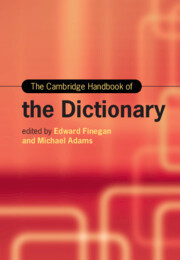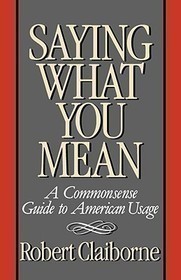
Dimensions of Linguistic Variation
- Publisher's listprice GBP 64.00
-
30 576 Ft (29 120 Ft + 5% VAT)
The price is estimated because at the time of ordering we do not know what conversion rates will apply to HUF / product currency when the book arrives. In case HUF is weaker, the price increases slightly, in case HUF is stronger, the price goes lower slightly.
- Discount 10% (cc. 3 058 Ft off)
- Discounted price 27 518 Ft (26 208 Ft + 5% VAT)
Subcribe now and take benefit of a favourable price.
Subscribe
30 576 Ft

Availability
Not yet published.
Why don't you give exact delivery time?
Delivery time is estimated on our previous experiences. We give estimations only, because we order from outside Hungary, and the delivery time mainly depends on how quickly the publisher supplies the book. Faster or slower deliveries both happen, but we do our best to supply as quickly as possible.
Product details:
- Publisher OUP USA
- Date of Publication 6 November 2025
- ISBN 9780197533499
- Binding Hardback
- No. of pages568 pages
- Size 235x156 mm
- Weight 768 g
- Language English 700
Categories
Short description:
The chapters in this book all demonstrate that, while corpora from different communities can vary in different ways, those differences must and can be integrated into data coding and metadata coding in ways that permit the linguistic patterns of various communities to be compared.
MoreLong description:
In Dimensions of Linguistic Variation, the contributors investigate evidence for the myriad factors which influence language variation and change, and consider how to best account for these factors in data and metadata coding. Given linguists' increasing ability to preserve and share data, questions arise around the possibility of comparing data from different communities: how should a corpus builder model, elicit, encode, analyze, and archive data that have been collected from highly diverse groups of speakers, from situations beyond the sociolinguistic interview, in a way that supports re-use, comparison across collections, and longer-term archiving?
Answering these questions requires a highly nuanced understanding of the social influences on speech variation. Social differences between communities and contexts can permit or encourage comparisons, in some cases, and render comparisons impossible, in others. The current volume builds on a rich foundation of insight from the sociolinguistics community as to how community-specific social distinctions shape variation and change within a given community and presents new, state-of-the-art insights from a diverse range of community and context types.
The editors have compiled a volume which will enable researchers both to expand the established set of variables expected to be considered in any community study, and to categorize data and results in ways that best permit cross-community comparisons. They present the issues involved in research planning, the modeling of the target community, subject selection, the elicitation and coding of demographic, situational and attitudinal factors, and how they all affect analysis and potential reuse.
Table of Contents:
1 Introduction to the Volume
Christopher Cieri, Lauren Hall-Lew, Malcah Yaeger-Dror, and Katie Drager
2 Section 1 Introduction: Research Planning and Interactions with Ethical, Legal, and Regulatory Issues
Christopher Cieri
3 IRBs, Researchers, and Social Media as (Socio)linguistic Field Sites
Alexandra D'Arcy
4 Conducting Linguistic Fieldwork with IRB Approval: A Suggested Approach
Denise DiPersio
5 Section 2 Introduction: Introduction to Demographics and Attitudes
Lauren Hall-Lew and Christopher Cieri
6 Sociolinguistics of Multicultural Societies: Implications for Data and Methodology
Shobha Satyanath
7 Bilingual Coding
Barbara E. Bullock, Almeida Jacqueline Toribio
8 Snapshots in Time: Coding Social Factors in Changing Communities
Devyani Sharma, Nathan Young
9 Dialect Contact
Yoshiyuki Asahi
10 Studying Ethnicity and Its Sociolinguistic Fluidities: Variationist Perspectives from English in South Africa
Rajend Mesthrie
11 Reorienting Blackness and Whiteness in Studies of Sociolinguistic Variation
Sonya Fix, Renée Blake, Cecelia Cutler, Nicole Holliday
12 Diversity and Dialect Contact in North American Latinx Communities
Robert Bayley
13 Conceptualizing and Coding Social Class in Linguistic Corpora
Joshua Hummel, Jordan Holley, Robin Dodsworth, Suzanne Evans Wagner
14 Social Class, Social Capital, Social Practice, and Language in British Sociolinguistics: Unravelling
Historical and Ethnographic Complexities
Anne Fabricius
15 What Can Macrosocial Categories Tell Us about Gender and Sexuality?
Penelope Eckert
16 Understanding Age
David Bowie
17 Religion and Religiosity
David Bowie and Malcah Yaeger-Dror
18 Linguistic Variation and Political Identity
Lauren Hall-Lew, Sarah van Eyndhoven
19 Language Attitudes and Language Change
Nicolai Pharao
20 Measuring Attitudes
Carmen Llamas, Dominic Watt
21 Levels of Linguistic Accommodation
Dominic Watt, Carmen Llamas
22 Section 3 Introduction: Introduction to Social Situation
Lauren Hall-Lew and Malcah Yaeger-Dror
23 What Kind of Data Is It? Situating Sociolinguistic Corpora in Context
Sali A. Tagliamonte
24 Best Practice for the Study of Language Change in Real Time
Frans Gregersen, Gert Foget Hansen
25 Coding Categories Relevant to Interaction
Richard Ogden, Marina N. Cantarutti
26 Approaching Variation in Political Discourse
Jennifer Sclafani
27 Self-Recordings and Oral Histories
Sonia Barnes and Lauren Hall-Lew
28 Social Media as a Sociolinguistic Resource
Jacob Eisenstein
29 Singing as a Dimension of Linguistic Variation: Considerations for a Corpus of Song
Andy Gibson
30 Discussion: Balancing Representativity and Metadata in Sociolinguistic Corpora
Tyler Kendall
Index







